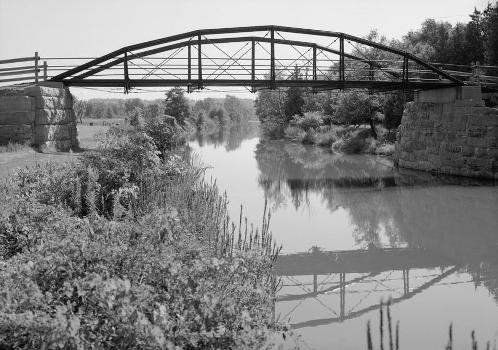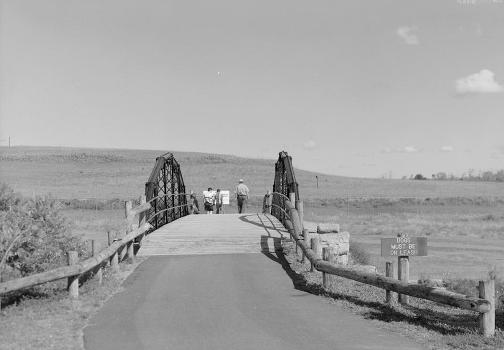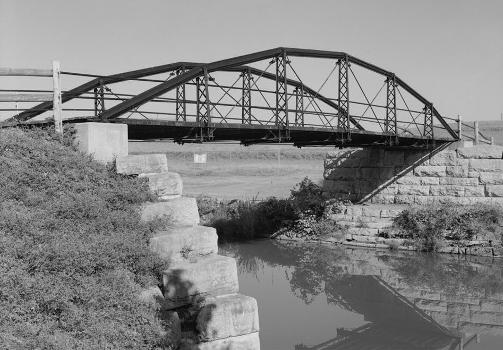General Information
Project Type
| Function / usage: |
Canal |
|---|
Awards and Distinctions
| 1967 |
for registered users |
|---|
Location
Technical Information
Dimensions
| width | 12.1 m | |
| total length | 584 km | |
| depth | 1825: 1.2 m 1862: 2.2 m |
Chronology
| 1699 | French Engineer Vauban suggests canal between Lakes Erie and Ontario. |
|---|---|
| 1724 | Cadwallader Colden proposes canal linking Lake Erie and Hudson River. |
| 1784 | Christopher Colles proposes improving navigation of Mohawk River. |
| 1786 | An act for improving the navigation of the Mohawk river, Wood creek, and the Onondaga river, with a view to opening an inland navigation to Oswego and for extending the same, if practicable, to Lake Erie. Bill defeated. |
| 21 March 1791 | Act authorizing survey and estimates for Mohawk and Hudson rivers and Wood creek. |
| 1792 | Western Inland Lock Navigation Company Incorporated to open a navigable waterway from Albany to Lakes Seneca and Ontario. |
| 1796 | Private firm builds locks to bypass Little Falls. First locks built in U.S. |
| 1798 | Niagara Canal Company incorporated to build a canal between Lake Ontario and Lake Erie. |
| February 1811 | Report of the Commissioners appointed to explore the route of inland navigation from Hudson's river to Lake Ontario and Lake Erie. |
| 1816 | Governor De Witt Clinton's visits the canal. |
| 17 April 1816 | New York Legislature passes a canal law. |
| 4 July 1817 | Canal construction begins at Rome, New York. |
| 23 October 1819 | Middle section of canal opened from Utica to Rome, 96 miles (154 km). |
| 24 November 1819 | Champlain Canal opened. |
| 2 July 1822 | River boats begin using canal section from Genesee river to Pittsford, with overland connection for several miles during Irondequoit valley embankment completed in October. |
| October 1822 | 180 miles (290 km) of canal open from Rochester to Little Falls. |
| 1 October 1823 | Eastern section of Canal completed, continuous navigation possible from Genesee River to Albany and Lake Champlain. |
| 6 October 1823 | 802 foot (243 m) stone aqueduct over Genesee river opened in Rochester. |
| April 1824 | Brockport - Rochester section opened. |
| 26 October 1825 | First passage through canal from Lake Erie to New York City. |
| 1832 — 1862 | The Erie Canal is deepened to account for increased traffic. Barges carrying up to 240 tons can now pass on the canal. |
| 1868 | 3 million tons of freight have been transported on the canal. |
| 1882 | All tolls are abolished on New York state canals. |
| 1903 — 1918 | Decision to again widen the canal to allow for the passage of barges of 3000 t pulled or pushed. |
| 1994 | Commercial use on the New York state canals ceases. The canals are used mostly for recreational purposes now. |
Participants
- John B. Jervis (engineer)
- James Geddes (engineer)
- Frederick Mills (engineer)
- Benjamin Wright (engineer)
- John Sullivan (engineer)
Relevant Web Sites
Relevant Publications
- (2000): 1869 Whipple Bridge Back across Enlarged Erie Canal. In: Practice Periodical on Structural Design and Construction, v. 5, n. 3 (August 2000), pp. 106-114.
- Building the Erie Barge Canal. In: Scientific American, v. 93, n. 14 (30 September 1905), pp. 254.
- (1964): The Erie Canal. American Heritage, New York (USA).
- (2002): Landmarks in American Civil Engineering History. In: Civil Engineering Magazine, v. 72, n. 11-12 (November - December 2002).
- (2011): Ohio and Erie Canal Towpath Pedestrian Bridges. Presented at: 4th International Conference Footbridge 2011, Wroclaw, Poland, 6-8 July 2011.
- About this
data sheet - Structure-ID
10000141 - Published on:
21/08/2002 - Last updated on:
28/05/2021












